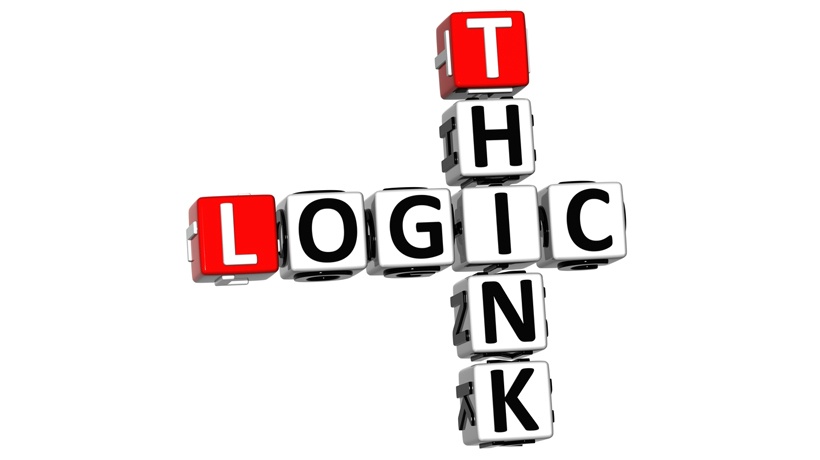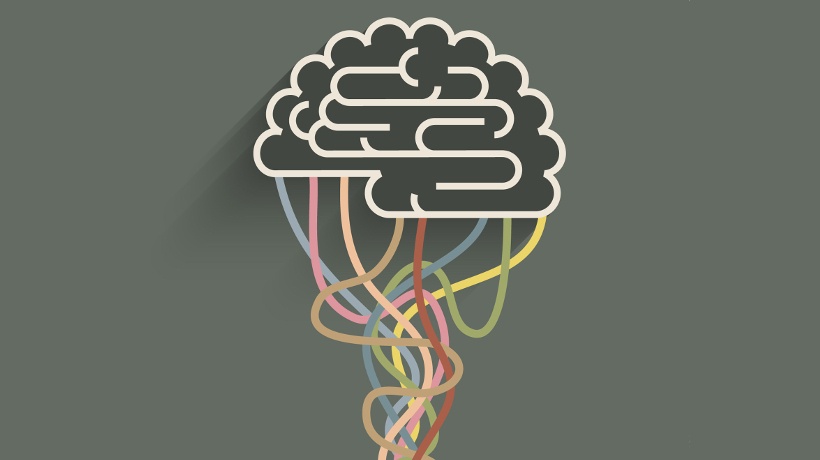Logical - Mathematical Intelligence And Instructional Design
Professor Howard Gardner, the Hobbs Professor of Cognition and Education at Harvard had a radical idea in the seventies:
“By 1981, I was claiming that all human beings possessed not just a single intelligence, rather we humans are better described as having a set of autonomous intelligences.”
That is from Gardner’s seminal book, Frames of Mind.
Logical - Mathematical Intelligence
Most of us would immediately think of scientific thinking when we read that phrase, and we would be right. However, this logical - mathematical capacity also has to do with our ability to recognize and to work with patterns or abstract representations such as numbers and geometric shapes. Logical - mathematical intelligence allows us to see relationships between things that are not letters of the alphabet -such as shapes and symbols- in order to solve problems that are thought of as scientific. People such as programmers, architects, mathematicians, and statisticians need this skill most; but we all have it to some degree and use it to learn. It is also an important part of problem solving and critical thinking.
The multiple intelligences identified by Gardner are: Verbal-Linguistic, Logical-Mathematical, Visual-Spatial, Bodily-Kinesthetic, Musical-Rhythmic, Interpersonal, and Intrapersonal. In this article I am going to focus on logical - mathematical intelligence from this arsenal of intelligences.
A Problem-Solving Coping Skill
If anyone is using their logical - mathematical skills in attempting to solve a mathematical or logic problem, recognize that what they are really doing is dealing with patterns, symmetry, asymmetry, and relationships. They are also dealing with a symbolic language that is largely not English, but is rather a mix of English and mathematical symbols.
In the following arithmetic problem, there are both English words and other symbolic representations: If a = 9 and if b = 10, then what does a multiplied by b equal? Here we are being asked to use logic, knowledge of symbols, relationships, and numbers, and the English language to recognize a pattern -or more correctly a progression- to answer a question and solve a problem.
Awakening The Logical - Mathematical Intelligence
The logical - mathematical intelligence is wakened when the brain/mind sees a problem it needs to solve. The first encounter with a problem that can only be solved by the logical - mathematical intelligence is probably in the nursery when a baby sees patterns in the objects around the room and decides to rearrange the objects to fit another pattern they have in mind. It is still like that in adulthood and beyond. We are pattern-relationship and pattern-recognition machines.
Psychologists infer from this that once baby’s mind becomes comfortable dealing with and manipulating concrete patterns represented by objects on the nursery floor, baby will become aware that they can deal with abstract patterns also, and realize that they can manipulate patterns of numbers -as well as other ideas- in their mind. This is an awakening, and this is the beginning of mathematical ability.
Sadly our US Education System does not capitalize on this innate ability and instead teaches to the tests. As a result in 2013 America was ranked 21st out of the 23 most advanced nations in math, or numeracy as it is sometimes called. And in this the most advanced nation on earth we are only in the middle of the pack when adults are surveyed.
Poor mathematical skills lead to higher costs both for individuals and the corporations they work for. This shows up in study after study. In one example almost three-quarters of study participants purchased hand lotion when it was labeled "50 percent more" than when it was labeled "35 percent off," even though the deal is slightly better on the lotion whose price is reduced 35 percent. (If you normally paid $3 for eight ounces of lotion, a "50 percent more" offer would be $3 for 12 ounces, or 25 cents an ounce, while a "35 percent off" offer would be $1.95 for eight ounces, or about 24 cents an ounce.
The actual cost of low numeracy skills to the UK economy alone is estimated at $3.2 billion. In the USA that would be more like $6.8 billion in lost productivity. Increasing the percentage of Americans to the proficiency levels of students in math to that of Canada or South Korea would cause an increase in US growth of almost 1% point.
Even small improvements to your workforce’s numeracy skills would make a big difference.
What is Numeracy? Numeracy is the knowledge and skills required to effectively manage and respond to the mathematical demands of diverse situations. It involves developing confidence and competence with logic and reasoning, and requires an understanding of how data are gathered and presented in diagrams, graphs, tables and charts. It is vital to the full participation of employees in your company.
What is Innumeracy? It is the mathematical counterpart of illiteracy and since it is mostly a socially based activity - since it requires the ability to integrate math and communication skills - it is intricately linked to language, as words are the tools for translating numerical code and giving it meaning.
The possibility of costly mistakes due to innumeracy is even larger than with illiteracy.
Logic = Patterns And Relationships
The human mind is always looking for patterns and relationships; mathematics is just one formalized way in which we do this. Even very young children can extend a pattern by making a leap of logic. If you were to ask a four year old who knew her alphabet, “What two letters of the alphabet come after the letters a, b, c, and d?” the child would almost certainly determine the correct response by using their logical - mathematical intelligence.
By asking this, you are in effect setting up a problem in the child’s mind; and the human mind always seems to at least attempt to rise to these kinds of pattern recognition challenges. It is exactly the same when you ask a child “What two numbers come after 1, 2, 3, 4, and 5? Or with 1, 3, 5 and 7?
In effect, there is no difference between a young student seeing the patterns in the questions above and the mathematician (Euclid 2300 years ago) who first saw a pattern to prime numbers. He saw that some numbers can be divided only by themselves and 1, and began a sequence 2, 3, 5, 7 in which the next number is not 9 but 11; the next numbers in the sequence are 13 and 17, because they are obeying a different law of progression but still at root based on patterns and relationships.
Employees need to be proficient in the basics of numeracy to be able to fully participate in the workforce and further their education and training opportunities. Raising the levels of these skills will lead to a more flexible, skilled and adaptable workforce, increased productivity and a competitive edge for businesses. Workplace projects will be positively affected by improving communication, and employees’ ability to complete workplace documentation, as well as reduced workplace errors and absenteeism, and improved staff retention and quality.
When presenting your ideas on the need to sharpen logic and math skills, perhaps by introducing the previous two problems, it makes sense to enter into a discussion about the difference between the alphabetical and numerical systems of notation. Talk, or rather get them to talk, about the idea of symbolism early on. Other disciplines such as manufacturing or accounting will make more sense, and their importance heightened.
The Best Employers Want The Best Pattern-Recognition Thinkers
Why? Because those who think for a living not only make more, but they contribute disproportionately to an enterprise.
“How many words have you spoken in your life so far?” This is obviously more about thought-processes than about the answer. If people attempt to answer the question, they will inevitably begin with a pattern and try to recognize it and extend from it. How would go about figuring that out? My using patterns and relationships.
Microsoft is notorious -or admirable depending on your point of view- for asking interviewees to try to figure out, in a matter of a few minutes, how many square feet of turf there are in all 32 Major League Baseball parks. They are not looking for an actual precise answer; they are looking for how well the candidate can recognize patterns, make patterns, and then reasonably interpret them.
How many bricks are there in a neighbor’s house? How many pencils laid end-to-end would it take to stretch from here to there…..you pick the beginning and end points? How many seconds are there in a day, a year, or an average lifetime? How many cans of soda would it take to fill up your sink?
Guesstimation matters. Taking a stab / putting a stake in the ground / guessing has its role. It’s often the best way to begin because it starts a pattern that can be refined. Positing something, refining and testing its assumptions, and doing it all over again is sometimes the only logical way to arrive at an approximation.
I am sure that you have seen people at home decorating stores who have woefully underestimated their need for wallpaper, or perhaps you have heard stories from your tax preparer about people who delay filing with the IRS because they are so uncomfortable dealing with numbers. For better or for worse, numbers are as much a part of our civilization’s landscape as words, and your employees need to master them. The good news is that we are all numerate to some extent; it is a question of instructional designers awakening this skill in their students. Your job as an Instructional Designer is to awaken the scientific, logical and mathematical curiosity and intelligence of those you are teaching.
Number games sharpen mathematical senses. Encourage your people to play games which sharpen their sense of numbers and patterns such as Clue, Dominoes, and Go. Dr. Thomas Armstrong has literally dozens of techniques listed in his book 7 Kinds of Smart. Am I suggesting your people spend time at work playing games that improve their logic? Absolutely! It is a great investment. And the schools didn’t do it so you have to.
Logic Rules: It Is Your Company’s Self-Defense Mechanism
An error in logic leads to an error in judgment or decision. So it pays to get it right: and getting it right means getting to the Truth.
Logic is the backbone of critical thinking. Logic is extremely useful for uncovering error and establishing truth. There are 3first principles of logic.
- The law of identity.
A is A. An Apple is an Apple. Something is what it is. Anything that exists has characteristics. In other words, if something exists, it has a unique nature, an essence. It is Sui generis – one of a kind. A tree has branches, leaves, a trunk and roots. We recognize what something is by observing its characteristic. You know that a tree is a tree because you see its branches, leaves, trunk and roots. Furthermore, if something has an identity, it has a single identity. It does not have more than one identity. If something exists it has a set of attributes that are consistent with its own existence. It does not have a set of attributes that are inconsistent with itself. Therefore we can easily conclude that a tree is not a house. - The law of non-contradiction.
A cannot be both A and not A at the same time and in the same sense. Something or some statement cannot be both true and false at the same time and in the same way. In discussions and debates we are naturally able to recognize when someone is contradicting himself. A contradiction occurs when one true statement excludes the possibility of another true statement and yet both are claimed to be true. Since we know that both cannot be true, we see a contradiction. From this principle, we can conclude that truth is not self-contradictory. - The law of excluded middle says that a statement is either true or false.
I am pregnant. The statement is either true or false. Since I am a male, it is not possible for me to be pregnant. Therefore, the statement is false. If I were a female, it would be possible for me to be pregnant. A woman is not "kind-of" pregnant. She either is or is not pregnant - there is no middle position. The law of the excluded middle is important because it helps us deal in absolutes - truths. Computers right now only deal with absolutes – on/off. That will change with quantum computing which will challenge this law and improve our lives for it since there is nothing inherently wrong with holding, suspended on one’s mind, the possibility that something is or is not, is either true or false or that a statement is either true or false. Once logic has proved something to be true or false then truth has been achieved.
This is particularly important in a society where relativism is promoted and truth statements are often denied.
To see how to leverage a team for maximum return watch the free demonstration here.
And please, share!








